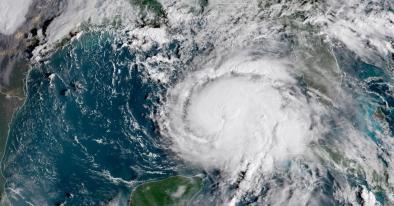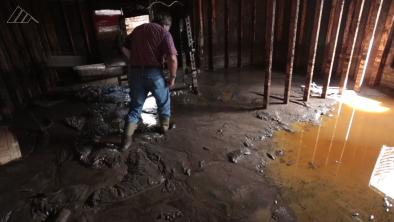Hurricane Florence: Analysis on the contribution of sea level rise to storm surge and damage
Study key findings
- 1-in-5 of the homes impacted along the Carolina coast during Hurricane Florence wouldn't have fared so badly had sea levels not risen significantly since 1970.
- Sea level rise since 1970 caused Hurricane Florence to "significantly affect" more than 11,000 additional homes.
- Tidal data shows that the relative sea level off the Carolina coast has risen about a half-foot since 1970.
- Hurricane Florence’s storm surge affected more than 51,000 homes by pushing water over 25% or more of each property.
- The regional sea level, projected by the Army Corps of Engineers for just 30 years from now, is more than 1 foot above current levels. At that level, the same storm surge from Florence would have nearly double the impact — instead of 51,000 flood-affected homes, North Carolina would see 102,000 affected homes.
Study abstract
Data scientists from the non-profit First Street Foundation have found that sea level rise since 1970 caused Hurricane Florence’s storm surge to significantly affect more than 11,000 homes.
Hurricane Florence’s storm surge impacted over 51,000 homes by pushing water over 25% or more of each property. First Street’s research used a geospatial analysis to model this storm surge at the sea levels observed in 1970, and found that because of higher sea levels, over 11,000 of those impacted properties would not have been affected in 1970 – signaling that sea level rise is responsible for these additional impacts. The study also found that at the sea level projected for 2050 by the Army Corps of Engineers, approximately 15 inches above current levels, the same storm surge from Hurricane Florence would approximately double the impact and affect 102,000 homes.
According to tidal data in the region, relative sea level off the coast of the Carolinas has risen approximately 6 inches since 1970. Higher sea levels cause greater storm surge, as there is more water available for hurricanes to push onto land, and that additional water removes friction that would otherwise slow the surge. Research has shown that sea level rise has a non-linear positive impact on storm surge; the conservative models used in this research show that increases in sea level rise result in an additional 23% relative increase in storm surge.
In addition to sea level rise, the scientists found that changes in housing development patterns also played a significant role in the number of homes affected by Hurricane Florence’s storm surge. Since the 1970’s, much of the region’s wetlands, farms, and conserved areas have been developed for urban use. Many of the homes built in these areas were impacted by Hurricane Florence’s storm surge. By applying Hurricane Florence’s observed storm surge to the housing development patterns of 1970, the scientists found that only 23,000 homes would have been impacted, compared to the 51,000 impacted today.
Related Content






